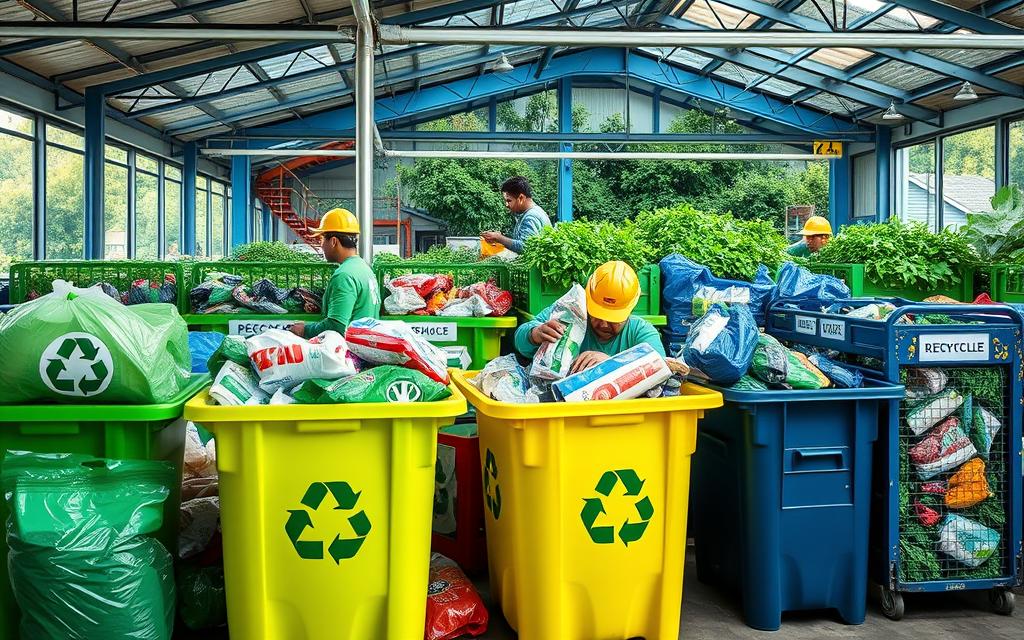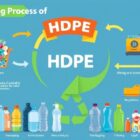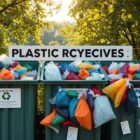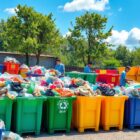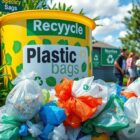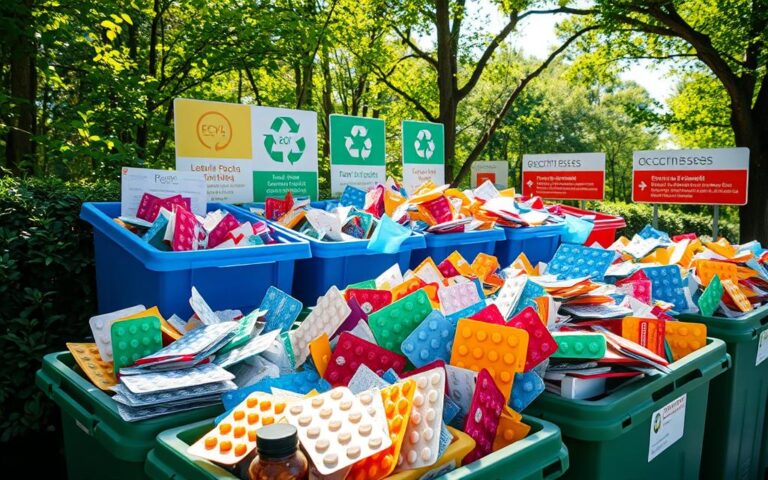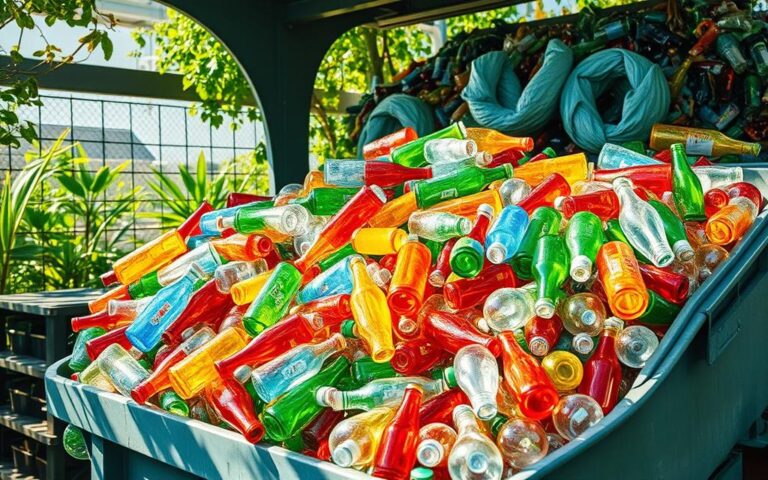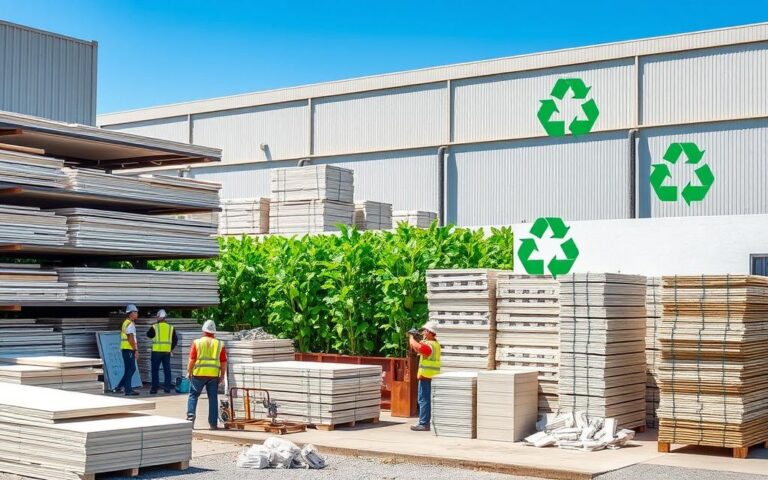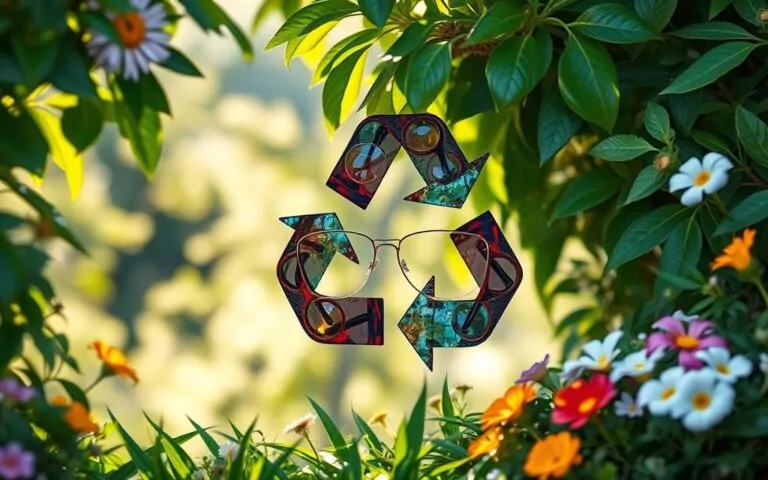Can Plastic Bags Be Recycled? Best Disposal Options
We use about 100 billion plastic bags every year in the US. Most are only used for 12 minutes before we throw them away. Sadly, a plastic bag can take over 500 years to break down. As they do, they release harmful microplastics into our environment.
But there is good news: plastic bags can be fully recycled. They’re mostly made from materials like high-density polyethylene (HDPE) and low-density polyethylene (LDPE). Yet, recycling them isn’t easy. They can’t go in your usual recycling bin and need special places to be processed correctly.
Big stores like Kroger, Safeway, Target, and Walmart are stepping up. They offer special bins for recycling plastic bags. Learning about how to recycle plastic bags and the benefits of doing so can help us all. We can make a big difference in caring for our planet. Let’s see how we can better prepare and recycle plastic bags in the following sections.
Understanding Plastic Bags and Recycling
Plastic bags are a common sight in our shops, but they’re hard to recycle and harm the environment. Most are made from two types of plastic: high-density polyethylene (HDPE) and low-density polyethylene (LDPE). By understanding these materials and how they’re recycled, we can reduce their damage to our planet.
Types of Plastic Used in Bags
HDPE and LDPE are the main plastics in plastic bags. HDPE is strong and used for grocery bags, while LDPE is more flexible, used in retail and food packaging. Recognising these plastics helps in their proper disposal and recycling.
Why Plastic Bag Recycling is Important
Plastic bags pose a big problem for marine life and ecosystems. They’re a major pollutant, threatening wildlife and the environment. Recycling them reduces this harm. Shockingly, only 9.1% of plastic film is recycled out of the over 4.83 million tons produced.
Recycling initiatives are crucial for the planet and resource conservation. For example, recycling a ton of plastic bags saves 11 barrels of oil. This highlights the value of recycling systems.
| Plastic Type | Common Uses | Recycling Challenges | Environmental Impact |
|---|---|---|---|
| High-Density Polyethylene (HDPE) | Grocery bags, packaging | Low recycling rates, contamination issues | Persists in landfills for hundreds of years |
| Low-Density Polyethylene (LDPE) | Retail bags, wraps | Limited recycling facilities, low awareness | Breaks down into microplastics, affecting waterways |
Can Plastic Bags Be Recycled? A Comprehensive Overview
Many people find it tough to understand how plastic bag recycling works. They often think all bags can be recycled with regular rubbish. However, this isn’t true. Most local recycling programmes don’t take plastic bags. They cause contamination issues and are hard to process with other items.
Common Misconceptions About Plastic Bag Recycling
Many believe plastic bags can be recycled at home. This leads to them being thrown out wrongly, causing big problems. Contamination from these bags can break recycling equipment and make it more expensive to run these centres. Often, workers have to remove the bags by hand.
There have been efforts to make plastic bag recycling better. Since 2009, some shops must have recycling schemes for bags. This means bags used for carrying shopping, if clean, can be recycled properly.
You should take plastic bags to special drop-off spots, like supermarkets. Not everything plastic can be recycled. Make sure they are clean and don’t have things like stickers on them. This helps the recycling process a lot.
How to Prepare Plastic Bags for Recycling
Getting plastic bags ready for recycling is very important. First, remove all items that could spoil the recycling process. This means taking out receipts, stickers, or any bits of food.
Removing Contaminants from Plastic Bags
Checking each bag for unwanted materials is key to protecting the recycling process. Even one dirty bag can spoil a whole batch, making it unrecyclable. To keep this from happening, here’s what to do:
- Empty the bags completely.
- Wipe down the interior to eliminate food residues.
- Check for labels or stickers and remove them.
By doing these things, you help make sure bags are recycled right. It leads to a cleaner recycling stream.
Setting Up a Home Recycling System
Setting up a place at home for collecting plastic bags can majorly cut down on waste. Use a specific bin or bag to keep things tidy. A big trash bag works well and can hold up to 100 bags. Check that the bags are #2 or #4 types, as these are recyclable.
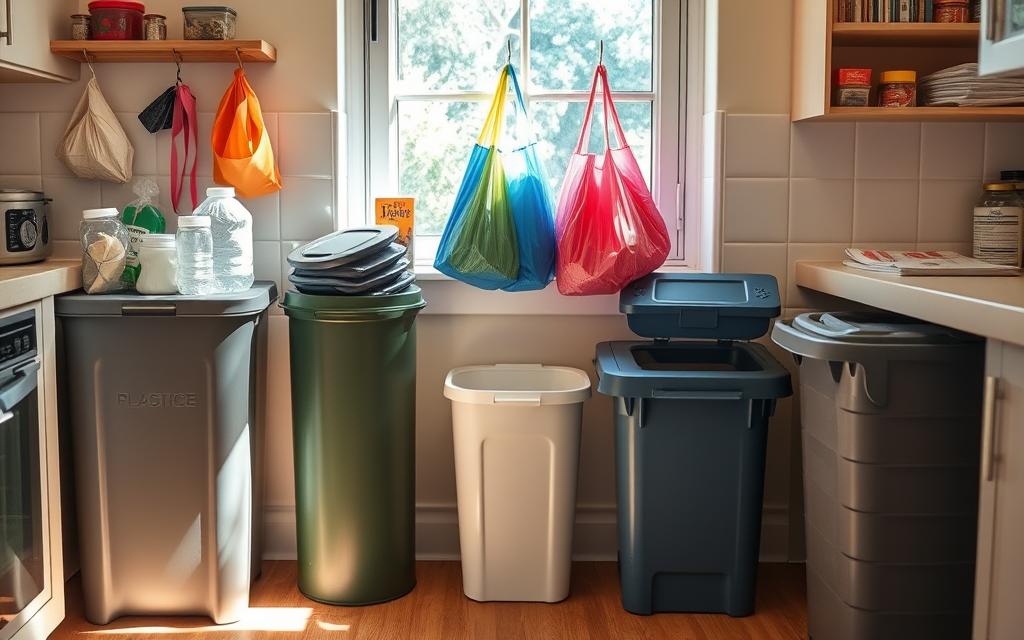
Having a system like this makes recycling easier. It shows you care about the planet. Small efforts like this make a big difference in reducing plastic waste and improving recycling in your area.
| Type of Plastic | Plastic Symbol | Characteristics |
|---|---|---|
| Low-Density Polyethylene (LDPE) | #4 | Flexible and transparent |
| High-Density Polyethylene (HDPE) | #2 | Durable and strong |
Where to Recycle Plastic Bags
Recycling plastic bags is easier with the right info. Many grocery stores offer drop-off points for this purpose. Knowing the store’s policy helps a lot.
Finding Local Collection Points and Bin Locations
Big grocery chains like Tesco and Sainsbury’s have bins for plastic bags at their entrances. You can find places to recycle bags online too. Local councils might also have spots to drop off your bags.
Understanding Store Policies on Recycling
Different stores have their own rules for recycling bags. It’s important to know what bags you can recycle where you shop. For example, bags need to be clean and dry at some places. This helps make recycling work better for everyone.
| Store Name | Accepted Bags | Notes |
|---|---|---|
| Tesco | Clean polyethylene (PE) bags | Check for specific bag types accepted. |
| Wegmans | Retail and carryout bags | Must be free from residues. |
| Home Depot | Bubble wrap and shipping envelopes | Ideal for packaging materials. |
| Whole Foods | Produce and zip-top bags | Ensure bags are dry and clean. |
| Target | Plastic bags from groceries | Regularly check for updated policies. |
The Plastic Bag Recycling Process Explained
The recycling process for plastic bags includes several crucial steps, beginning with collection. It ends with making new products. Plastic bags are gathered from places like homes and shops. Then, facilities called Material Recovery Facilities (MRFs) or Plastic Recovery Facilities (PRFs) process them. After collection, the bags are carefully sorted. This is done using high-tech machines like optical sorters and ballistic separators. This step is important to reduce contamination risks.
What Happens to Recycled Plastic Bags
After sorting, the plastic bags are cleaned. This removes any contaminants that might stop them from being recycled properly. Cleaning is vital to maintain material quality before the bags are shredded into smaller pieces. This makes the bags easier to manage. The last step is extrusion, where these pieces are melted down. Then, they’re turned into plastic pellets. These pellets can be used to make new products, recycling materials instead of wasting them. A company named Trex uses these pellets to make plastic lumber.
The Role of Plastic Pellets in New Products
Plastic pellets are key in making many plastic products. This extends the life of plastic bags, greatly cutting down on waste. This process shows how recycling supports a circular economy. In this economy, materials are reused again and again. For more details on recycling steps, check out this guide to plastic recycling. Learning about this helps us throw away things better. It also encourages us to use plastic in a way that’s good for the planet.
FAQ
Can I recycle all types of plastic bags?
Only HDPE or LDPE plastic bags can be recycled. Look for symbols #2 or #4 on the bags.
What should I do before recycling plastic bags?
Remove food bits, receipts, and labels first. Bags must be clean and dry.
Why is recycling plastic bags crucial for the environment?
It stops plastic from harming sea animals and uses less oil. It also reduces landfill, where bags last for ages.
Are there special recycling bins for plastic bags at stores?
Tesco and other shops have bins for plastic bags. You’ll find them at the shop entrance.
What happens to recycled plastic bags after they are collected?
They are made into small pellets. Those pellets help make new items, helping the planet.
How can I set up a home recycling system for plastic bags?
Use a bin or big bag to collect clean, ready-to-recycle plastic bags. Check they have the right recycling symbols.
What are the common misconceptions about plastic bag recycling?
Many think curbside programs take plastic bags. This is often not true, due to contamination. Always check local rules.
How do I find local drop-off points for plastic bag recycling?
Check online directories or ask your council for recycle points. Shops often have them too.
What is the role of plastic pellets in the recycling process?
Pellets from recycled bags are used to make new products. This reduces the need for new plastic.

